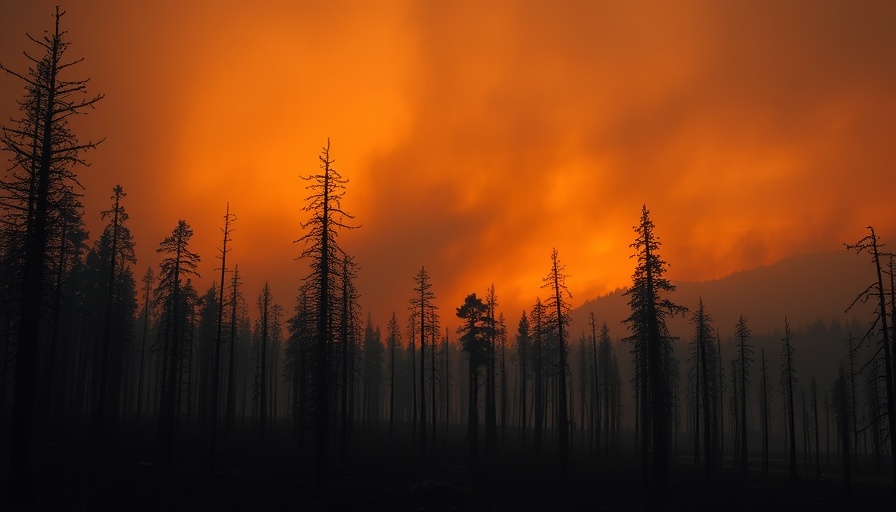
Escaping the Inferno: The Rising Threat of Canadian Wildfires
In the wake of severe Canadian wildfires, over 25,000 residents have been evacuated from numerous communities across Manitoba, Saskatchewan, and Alberta. The ongoing devastation poses serious threats not only to lives and properties but also to air quality across the border in the United States. As the blazes rage on, officials are scrambling to devise strategies for protecting both local citizens and the surrounding environment.
Emergency Response: Firefighting Necessities Amidst Resource Constraints
In Manitoba, where nearly 17,000 residents have fled, the situation remains precarious. With around 170 active fires burning and forecasts indicating no immediate rain, the vulnerability of local communities is heightened. Authorities have issued warnings about poor air quality due to smoke spreading into U.S. states like Minnesota and North Dakota. Saskatchewan Premier Scott Moe has characterized the next week as pivotal, stressing that unfavorable weather could exacerbate the challenges faced—both for firefighters on the ground and evacuees seeking refuge.
A Coalition of Support: Calls for International Assistance
The Government of Canada has begun reaching out for additional international support to combat the escalating crisis. Countries faced with similar wildfire threats have joined forces in response measures, signifying the growing recognition that wildfires are not confined by borders. As climate change continues to exacerbate these events, global solidarity may be necessary to manage future outbreaks effectively.
Smoke Signals: Health Risks From Above
The public has been warned about fluctuating air quality, as smoke from Canadian wildfires spreads across the Great Lakes region. Health risks are amplified, particularly for vulnerable populations, including children and the elderly. Citizens in impacted areas are advised to monitor air quality alerts closely and follow precautions to minimize health impacts. As laboratories work to better understand the effects of wildfire smoke, local governments are grappling with immediate concerns of public safety during this crisis.
The Bigger Picture: Climate Change's Role in Wildfires
This alarming event is just one chapter in an ongoing saga concerning climate change, with experts warning that occurrences of extreme weather will likely escalate. The Canadian wilderness is already experiencing the brunt of these changes, with the 2023 wildfire season previously recorded as the worst to date. The trend poses substantial risks, not just for Canadians, but for a much larger geographic area affected by smoke and environmental degradation.
Looking Ahead: Predictions and Potential Solutions
In the face of this growing crisis, a shift in policies and practices is critical. Preparing for longer wildfire seasons through awareness, readiness, and resources could mitigate the devastating impacts of wildfires. As climate advocates call for decisive action, initiating discussions about resource allocation, technological advancements in firefighting, and international collaborations could pave the path toward a more sustainable environmental future.
Moving Forward: How You Can Help
In these challenging times, communities are encouraged to extend their support to those affected by wildfires. Donating to reliable organizations providing aid, staying informed about the crisis, and advocating for necessary policy changes can be powerful ways to contribute. As the situation develops, remaining connected and proactive can make a significant impact.
 Add Element
Add Element  Add Row
Add Row 



 Add Row
Add Row  Add
Add 


Write A Comment